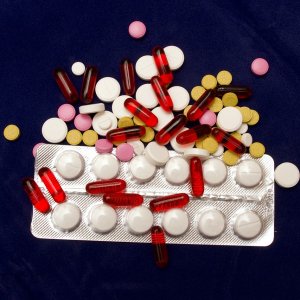
OTC Market Exceeds Growth Predictions
The presence of more pharmacies per head in Mexico than any other country, an improving regulatory environment, and high level of foreign investment has created formidable pharmaceutical and medical devices markets. Expected to be worth US$27.9 billion by 2020, according to GlobalData, Mexico’s healthcare industry engages over 350 domestic and multi-national companies in the manufacture of pharmaceutical products in Mexico. As a result, consumers increasingly understand the power of the active ingredients, rather than brand, and buying products at lower prices contributes to the growth of store brands and generic products within OTC medicines.

An estimated 1,187 brands of OTC products were reported in 2012 to be on sale in Mexico, compared to 700 brands in 2007. In Europe and North America, strategies to encourage consumers to treat minor ailments without aid from state infrastructure and public finances require a complex partnership between government agencies, healthcare professionals, pharmacists, and retailers. In the Mexican healthcare industry, top pharmaceutical companies such as Genomma Lab mostly deal with generic drugs, exemplified by the almost 500 new brands of OTC products in just five years.
In 2014 Electrolit, Aspirina, Next, Tempra, Sal de Uvas Picot, Suerox, Vitacilina, Pedialyte, Alka Seltzer and Agrifen accumulated the greatest sales volume in units in Mexico, while Merck, Genomma Lab and GlaxoSmithKline continue to acquire more OTC products. Merck reported a 55% increase in profits in 2013 as a result of introducing two new products into the market, Neurobion and Floratil. The OTC market is propelled partly by longer life expectancies and an aging population, hand in hand with a strong domestic production industry, and a favorable regulatory environment. Pharmaceutical companies may also seek to exploit switch opportunities (the formal process of switching a prescription-only medicine to an OTC medicine) to protect revenues from branded drugs that are about to lose their patent protection and take advantage of newly available channels such as supermarkets and the internet.
Many drugs previously restricted to prescription-only status, are becoming available over the counter. These products are considered safe, and their increased use indicates that patients are taking greater responsibility for their own health and taking some of the financial burden of drug treatment from public and private health systems and insurance companies. Mexico’s OTC medications have experienced a tightening of regulations partly in response to an increase in drug-resistant strains of infectious diseases. In the past, patients without adequate supervision have taken improper doses of antibiotics, causing diseases to mutate into stronger strains untreatable with existing vaccines or antibiotics. Nevertheless, while authorities do not want to discourage sensible out of the pocket spending, COFEPRIS regulations seek to protect the population from irresponsible use of products, and the increasing numbers of doctors at points of sale provide guidance to minimize self-medication.
The population could continue to see growth in over the counter medications, benefitting patients with low incomes as a result of more competitive prices, as well as companies that wish to enter into the Mexican market with the assurance that the sector will continue to expand in the short to medium term.

















